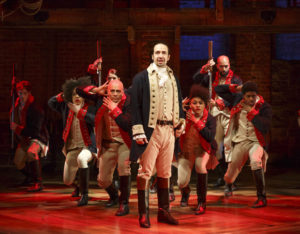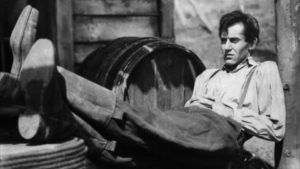 In today’s Wall Street Journal “Sightings” column I discuss the growing progressive backlash against Hamilton. Here’s an excerpt.
In today’s Wall Street Journal “Sightings” column I discuss the growing progressive backlash against Hamilton. Here’s an excerpt.
* * *
The New York Times recently published a piece by Jennifer Schuessler called “’Hamilton’ and History: Are They in Sync?” in which a gaggle of academic historians declared Lin-Manuel Miranda’s multi-ethnic hip-hop musical about the man on the $10 bill to be politically incorrect. While some of them claimed to like the music, they bristled at the rest of the show, and one dismissed it as “Founders Chic.”
Mr. Miranda, it seems, is too easy on Alexander Hamilton to suit progressive tastes. The Hamilton of “Hamilton” is a flawed but nonetheless incontestably heroic figure, an illegitimate Caribbean-born immigrant whose greatness is insufficiently acknowledged: “Another immigrant, comin’ up from the bottom/His enemies destroyed his rep, America forgot him.” But to left-wing scholars, the real Hamilton was an elitist who, in the words of Princeton’s Sean Wilentz, was “more a man for the 1% than the 99%,” and for Mr. Miranda to have portrayed him as “an up-from-under hero seems dissonant amidst the politics of 2016.”
I’ve been waiting for just such a reaction to “Hamilton” ever since it opened last year. Why? Because, as I wrote in my review of the original off-Broadway production, the show “is at bottom as optimistic about America as ‘1776.’ American exceptionalism meets hip-hop: That’s ‘Hamilton.’” Whether Mr. Miranda knew it or not—and he surely does now—such a point of view is by definition anathema to those who see America as a country so tainted with the original sin of class privilege as to be irredeemable….
 For my part, I think “Hamilton” is best understood as an exercise in historical myth-making, the same kind of thing that John Ford was doing when he made such films as “My Darling Clementine,” “They Were Expendable” and “Young Mr. Lincoln.” Ford’s purpose was to pass American history through the prism of popular art, in the process creating semi-fictional American heroes whose stirring lives would inspire young viewers to do great deeds of their own. Of course he knew perfectly well that his cinematic tales of historical derring-do were far from literally true, but he also understood the pivotal role played by idealism in the formation of character. That’s what the newspaper editor in Ford’s “The Man Who Shot Liberty Valance” meant when he told Jimmy Stewart’s character, “This is the West, sir. When the legend becomes fact, print the legend.” And that’s what Mr. Miranda has done in “Hamilton”: He’s created a modern-day legend of his very own…
For my part, I think “Hamilton” is best understood as an exercise in historical myth-making, the same kind of thing that John Ford was doing when he made such films as “My Darling Clementine,” “They Were Expendable” and “Young Mr. Lincoln.” Ford’s purpose was to pass American history through the prism of popular art, in the process creating semi-fictional American heroes whose stirring lives would inspire young viewers to do great deeds of their own. Of course he knew perfectly well that his cinematic tales of historical derring-do were far from literally true, but he also understood the pivotal role played by idealism in the formation of character. That’s what the newspaper editor in Ford’s “The Man Who Shot Liberty Valance” meant when he told Jimmy Stewart’s character, “This is the West, sir. When the legend becomes fact, print the legend.” And that’s what Mr. Miranda has done in “Hamilton”: He’s created a modern-day legend of his very own…
* * *
Read the whole thing here.
